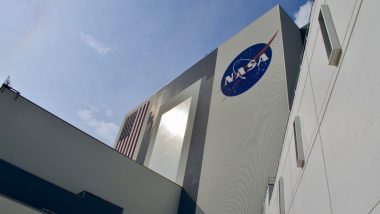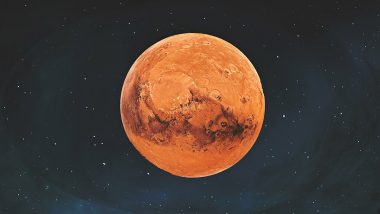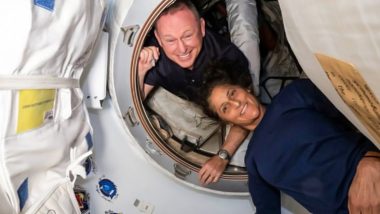Washington, September 29: NASA will halt commanding its Mars missions for the next few weeks as Earth and the Red Planet are on opposite sides of the Sun, the US space agency has said. The period, called Mars solar conjunction, happens every two years. This year it falls between October 2 and October 16.
While the missions on the Red Planet will continue collecting data, engineers back on Earth will stop sending commands to them until October 16, the agency said in a statement on Tuesday.
The Sun expels hot, ionised gas from its corona, which extends far into space. During solar conjunction, when Earth and Mars can't "see" each other, this gas can interfere with radio signals if engineers try to communicate with spacecraft at Mars. That could corrupt commands and result in unexpected behaviour from deep space explorers. NASA Launches Powerful Landsat 9 Satellite to Monitor Earth's Land Surface.
Before the conjunction begins, NASA engineers will send Mars spacecraft a list of simple commands to carry out for a few weeks. A few missions are likely to extend the commanding moratorium, as it is called, a day or two in either direction, depending on the angular distance between Mars and the Sun in Earth's sky, NASA said.
"Though our Mars missions won't be as active these next few weeks, they'll still let us know their state of health," said Roy Gladden, manager of the Mars Relay Network at NASA's Jet Propulsion Laboratory in Southern California, in the statement. "Each mission has been given some homework to do until they hear from us again," he added.
Perseverance mission will take weather measurements with its MEDA (short for Mars Environmental Dynamics Analyser) sensors, look for dust devils with its cameras (though it won't move its mast, or "head"), run its RIMFAX (Radar Imager for Mars' Subsurface Experiment) radar, and capture new sounds with its microphones.
The Ingenuity Mars Helicopter will remain stationary at its location 575 feet (175 metres) away from Perseverance and communicate its status weekly to the rover. NASA-Boeing Starliner Cargo Spacecraft Orbital Test Flight 2 Launch May Slip to 2022 Due to Unresolved Valve Issue.
The Curiosity rover will take weather measurements using its REMS (Rover Environmental Monitoring Station) sensors, take radiation measurements with its RAD (Radiation Assessment Detector) and DAN (Dynamic Albedo of Neutrons) sensors, and look for dust devils with its suite of cameras. The stationary InSight lander will continue using its seismometer to detect temblors like the large marsquakes it captured recently.
NASA's three orbiters -- Odyssey, Mars Reconnaissance Orbiter, and MAVEN -- will all continue relaying some data from the agency's surface missions back to Earth, in addition to gathering their own science.
(The above story first appeared on LatestLY on Sep 29, 2021 08:02 PM IST. For more news and updates on politics, world, sports, entertainment and lifestyle, log on to our website latestly.com).













 Quickly
Quickly





















